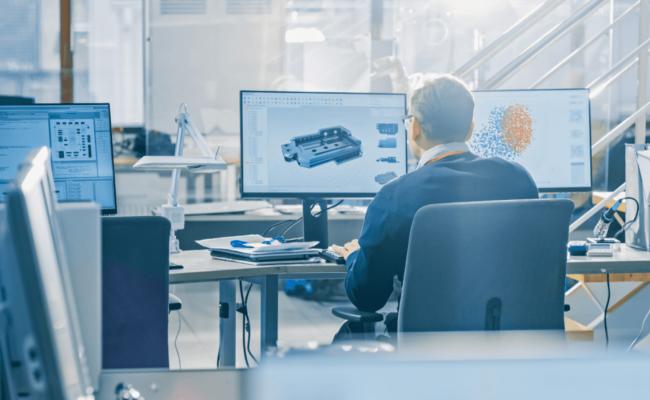Digital Twin augments paper plans into a detailed digital platform using 3D modeling of the entire building and its components.
It is paving the way for increased collaboration and greater optimisation of construction projects.
In this article, we will explore 5 of the biggest advantages of using digital twin technology in construction.
What is a Digital Twin?
First, let us explain further what exactly a digital twin is.
A Digital Twin creates a virtual representation of a procedure, system, service, product, or other physical object using 3D modeling, as well as virtual and augmented reality and other technologies.
With the intention of attaining valuable insights which may be later applied to the original physical object or building, a Digital Twin model can be used to run simulations, research potential performance and maintenance issues, and highlight and simulate opportunities for improvement.
Essentially, it allows you to make digital changes to the likes of plant equipment and see what effects it has throughout the entire building.
Advantages of Digital Twin
1. Informed investment decisions
Digital twin technology has the potential to furnish investors with precise cost estimates, real-time monitoring, better risk management, and improved collaboration in construction.
Thus, utilising this technology enables investors to make well informed investment decisions, streamline construction processes, and attain higher returns on investment.
2. Access to historical and real-time data
Digital twin provides a full overview of historical and real-time data over the project’s lifecycle.
The collection of this data is facilitated by sensors integrated into the building’s structure.
This data can then be used to monitor construction progress, highlight or predict potential roadblocks and improve project performance.
Consequently, stakeholders can stay updated and make informed decisions based on both the project’s current and predicted state.
3. Highlights opportunities for improvement
By generating a virtual model of the building, digital twin technology can reveal numerous possibilities for enhancing the building’s performance.
The model is created through designing, simulating, and scrutinizing the building using cutting-edge software tools.
This method allows for the pinpointing of flaws and areas that demand improvement in the building’s operation.
A prime instance of this technology’s effectiveness is its capacity to simulate the energy consumption of the building and disclose areas where energy consumption can be curtailed.
This could lead to implementing measures such as improved insulation, energy-efficient lighting systems, and optimizing the heating, ventilation, and air conditioning (HVAC) system.
4. Improves cost efficiency
The use of digital twin technology in construction projects can enhance cost efficiency by implementing predictive maintenance.
By employing sensors and sophisticated analytics, this technology can identify potential problems before they escalate into major issues, enabling early maintenance intervention.
This approach minimises downtime, mitigates expensive repairs, and prolongs the longevity of machinery and equipment, resulting in lower replacement costs.
Moreover, digital twin technology can optimize maintenance schedules by tracking the current performance of machinery and predicting when maintenance will be required.
5. Full risk assessment
Lastly, a digital twin can be employed to provide a full risk assessment of a construction project.
Project managers can utilise digital twin technology to generate a digital clone of the construction site and model various hypothetical situations.
This process enables them to develop a better comprehension of potential hazards and make informed judgments to minimize these hazards before they manifest in reality.
Digital Twin and Sustainability
Digital Twin technology has been a game changer in mapping out strategies for improving the energy efficiency and sustainability of our clients.
By running different simulations of changes to a client’s mechanical and electrical systems, we can accurately recommend a series of measures that will align with both the client’s vision and budget.
For instance, we may run tests to discover how the installation of fully zoned air conditioning and hybrid VRF (Variable Refrigerant Flow) impacts a business’s overall energy rating.
Together with our sister company, Lawler Consulting, Our mission at Lawler Sustainability is to make our buildings more energy-efficient, cost-effective to operate, and sustainable. If you are interested in our energy reduction solutions, please contact us.
Follow us on LinkedIn to keep up to date with all of our latest developments and industry trends.

